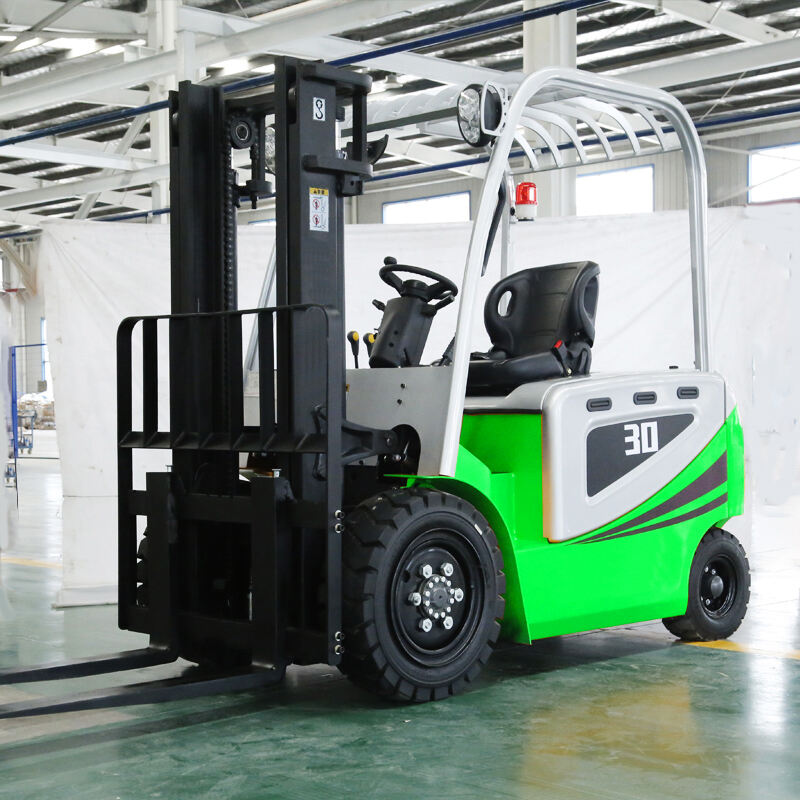Introduction
Over the years, Forklifts have become one of the most essential and widely accepted means for material handling in warehouses & industrial units across the world. However, if these machines are not used properly, they can create accidents, injuries and even death. That is why, it becomes extreme essential to choose forklift safety. This article outlines the top safety tips every operator must follow in order to ensure a forklift is being operated safely and efficiently.
Pre-Operational Checks
There must be a proper pre-operational inspection done. You start with a leak test, visual inspection, frame damage inspection and deformations on the mast. Functions of Hydraulic Controls Test Steering, Brakes and Functions Ofbrakes If you agree to tyre braked just I seePressure and condition Check that warning lights and horn operate correctly. They are performed to identify problems before they become major issues.
Operator Certification and Training High-Efficiency Wastewater Array Techniques
Proper training for forklift operators is not only advised, it is required. It ensures that (forklift) operators know how to safely operate forklifts, conduct pre-operational checks (of the forklift), manage loads and respond to emergencies. Furthermore refresher and continuing education in operator awareness of safety requirements and technological advancement are necessary. Regular practice enables operators to maintain their state of readiness in the face of potential safety challenges.
Safe Operating Procedures
Safe Operating Procedures: All forklift safety procedures begin with safe operating procedures, Operators should start and stop the forklift according to the exact directions from each manufacturer. Stick to the speed limit, drive safely and keep an eye on the surroundings. Before loading and unloading check that the load is stable and secured. It is essential to wear a seatbelt when riding ATV, because it prevents injury during a turn roll over accident.
Stability and Load Handling
In order to reduce the impossibility of poor appointed load centre dislocation, its essential understand where exactly a load centre is. When loads are not appropriately centred, it can make the forklift unstable. This means that drivers should properly load the forklift, ensuring its weight is evenly distributed and never exceeds the capacity. Note: You are not allowed to carry overloaded loads and at heights above safety. This keeps the forklift centre of gravity more stable to prevent tipping over.
Warehouse and Aisle Safety
Observe right-of-way rules and traffic routes in the warehouse. Important to note is the aisle width and visibility, not just upon entering a blind aisle or cornering, but at all times for operators! Since pedestrian safety will be important, operators need to pay attention to pedestrians and may make use of backup alarms or horns when appropriate.
Hazard Recognition
A fork lift operator that has been trained knows what to look for as a probable hazard eg wet and rough surface which can cause the tip of the lift to slip or turn over. Before lifting any loads overhead, ensure that there are no obstructions up high and the ground condition remains wet. Operators also have to know where hazardous material might be, and if there is anything on their path of travel that could cause a slip /trip.
Emergency Procedures
Knowledge of Emergency Forklift operators need to have knowledge regarding the emergency stops and controls on there forklift. They also need to understand the steps of reporting an accident, and what to do in case on occurs. Lastly, emergency management is another domain that every operator should know well enough to deal with when these issues arise and ensuring basic competence within first aid preventative measures along with fire knowledge will also be the best way of dealing with such issues.
Maintenance and Care
Another requirement on this list is maintenance. Maintenance is, in principle, the occupation of the mechanics; however, you can aid them by performing daily simple inspections and report defects and damages to responsible persons on time. This preventive approach avoids the accidents leading to breakdown of tools and machinery.
Personal protective equipment (PPE)
Appropriate PPE includes Protective Footwear, High Visibility wear and Hearing and Eye Protection PPE can protect operators against injuries as well as improve their visibility in the warehouse to avoid accidents from emergency equipment evacuations.
A bit of fatigue and health scare
Fatigue is probably the most common cause of forklift accidents. Breakage & stay fit cycle must be given to the Operator. An employer must identify, monitor and provide workplace that supports healthy operator rest to avoid misadventures caused due to fatigue.
Applicable Laws and Regulations
OSHA and ANSI: Forklift safety standards So, there are going to be mandatory compliance with training and the machinery plus safety equipment has to be prepped. You have no problem with your employees being able to report unsafe conditions.
Conclusion
After all, irrespective of their qualifications to drive a fork truck where they have been educated about the best practices surrounding safety and handling, in reality forklift safety is a team game between senior management and junior employees at the floor level. By following these simple safety rules and, even more critically, building a strong culture of safety, the risk to workers from forklifts will be far less. Compliance upkeep is a key direction to keep the workplace as safe as possible and it demands constant diligence in education of regulations.
Table of Contents
- Introduction
- Pre-Operational Checks
- Operator Certification and Training High-Efficiency Wastewater Array Techniques
- Safe Operating Procedures
- Stability and Load Handling
- Warehouse and Aisle Safety
- Hazard Recognition
- Emergency Procedures
- Maintenance and Care
- Personal protective equipment (PPE)
- A bit of fatigue and health scare
- Applicable Laws and Regulations
- Conclusion

 ONLINE
ONLINE